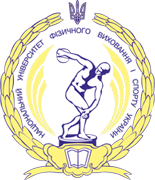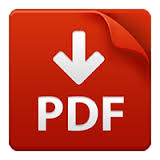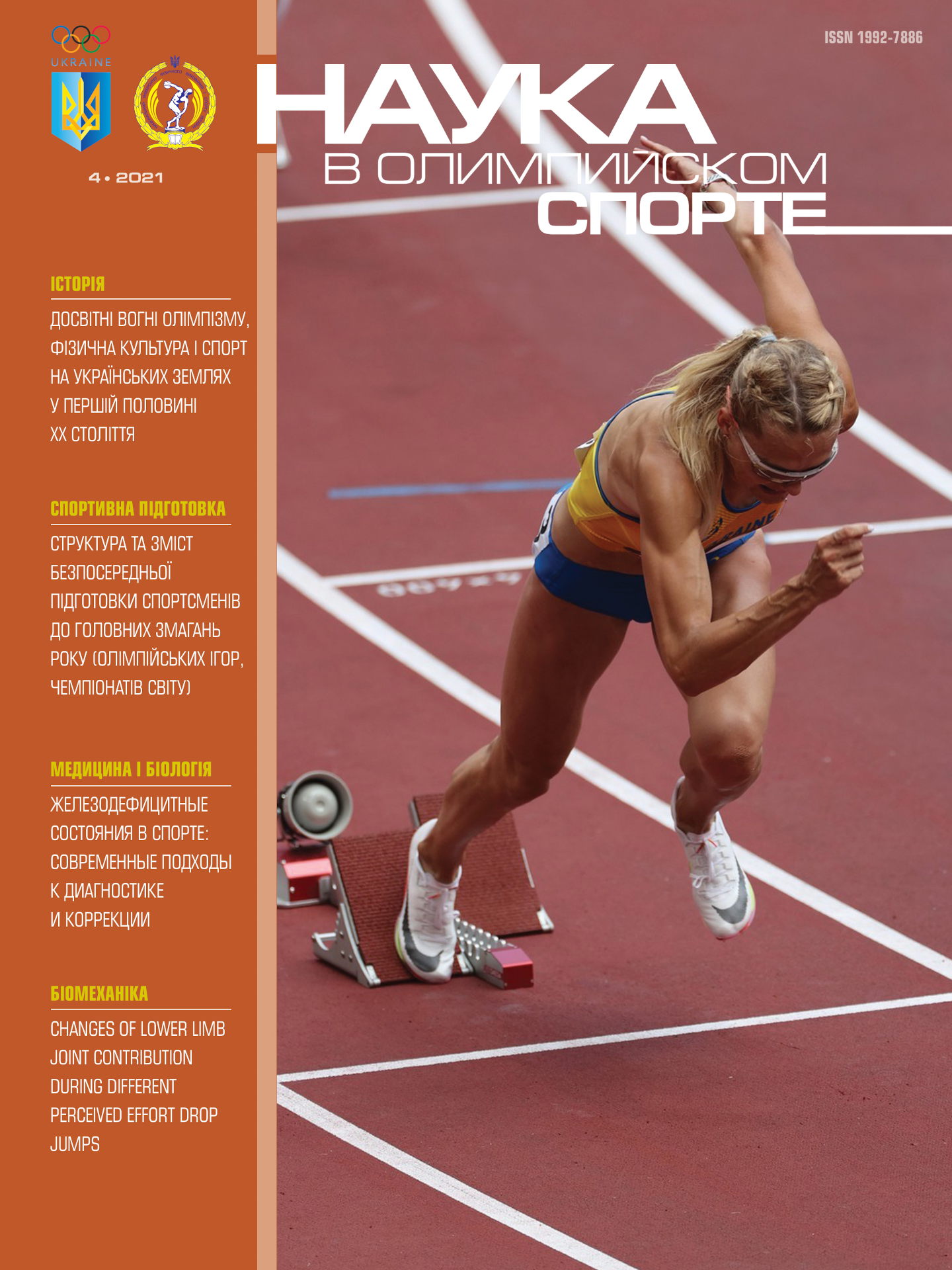doi: 10.32652/olympic2021.1_5
Мета. На основі аналізу та узагальнення даних наукової літератури сформувати сучасні уявлення у представників олімпійських видів спорту про роль контрольованих електролітів сироватки крові - калію, натрію, магнію і кальцію - у підтриманні загальної і спеціальної фізичної працездатності і здоров’я спортсменів.
Методи. Аналіз і синтез даних науково-методичної літератури та мережі Інтернет.
Результати. На основі аналізу даних наукової літератури сформовано сучасні уявлення у представників різних олімпійських видів спорту про роль калію, натрію, кальцію, передовсім іонізованого, і магнію в підтриманні функціонального стану серцево-судинної та скелетно-м’язової систем, водно-електролітного та кислотно-лужного балансу, а також системи підтримання агрегатного стану крові, яка відіграє безпосередню роль у своєчасній доставці до серця, головного мозку і скелетних м’язів кисню, пластичних і енергетичних субстратів.
Висновок. Оцінювання лабораторних параметрів вмісту основних контрольованих електролітів має бути строго індивідуалізованим, комплексним, адаптованим до завдань етапів підготовки спортсменів і обов’язковою складовою частиною медико-біологічного контролю в спорті вищих досягнень.
Література
1. Винничук ЮД, Гунина ЛМ. Диагностика нарушений обмена железа и эритроцитарных характеристик у спортсменок при физических нагрузках [Diagnosis of impaired iron metabolism and red blood cell characteristics in female athletes under physical exertion]. Лабораторна діагностика. 2016;(4): 17-22.
2. Громова ОА, Егорова ЕЮ, Торшин ИЮ, Громов АН, Гоголева ИВ. О роли магния в спортивной медицине [On the role of magnesium in sports medicine]. Российский медицинский журнал. 2016;(9): 560-571.
3. Дмитриев АВ, Гунина ЛМ. Спортивная нутрициология [Sports nutritiology]. Москва: Спорт, 2020. 639 с.
4. Иорданская ФА, Абрамова ТВ. Современные подходы к организации научно-методического обеспечения подготовки спортсменов в классическом и пляжном волейболе [Modern approaches to the organization of scientific and methodological support of athletes’ training in classical and beach volleyball]. В кн. «Тренируйся как чемпион. Классический и пляжный волейбол», авт. коллект. Алекно В, Иорданская Ф, Колец Д, Абрамова Т, Саммелвуо Т и соавт. Тверь: ИПК «Парето-Принт». 2020. 206-288.
5. Иорданская ФА, Цепкова НК. Фосфор крови: диагностическое и прогностическое значение в мониторинге функционального состояния высококвалифицированных спортсменов [Blood phosphorus: diagnostic and prognostic role in monitoring the functional status of highly skilled athletes]. Вестник спортивной науки. 2011;(4): 30-33.
6. Иорданская ФА, Цепкова НК, Кряжева СВ. Диагностическое и прогностическое значение микроэлементов крови в мониторинге функциональной подготовленности высококвалифицированных спортсменов [Diagnostic and prognostic value of blood trace elements in the monitoring of functional fitness of highly qualified athletes.]. Научно-методическое пособие. Москва, ООО «Скайпринт». 2013. 112 с.
7. Макарова ГА, Холявко ЮА. Лабораторные показатели в практике спортивного врача: Справочное руководство [Laboratory indicators in the practice of a sports physician]. Москва: Советский спорт. 2006. 199 с.
8. Мойса СС, Ноздрачёв АД. Особенности регуляции обмена кальция в разные периоды роста и развития [Peculiarities of calcium metabolism regulation in different periods of growth and development]. Успехи геронтологии. 2014;27(1): 62-71.
9. Решетняк ОА, Евстафьева ИА, Евстафьева ЕВ, Решетняк АВ. Особенности адаптации сердечно-сосудистой системы спортсменов к физической нагрузке в зависимости от уровня содержания кадмия, калия и кальция в организме. Вестник Таврического национального ун-та имени В.И. Вернадского. Серия. «Биология, химия». 2011;24(63, Вып. 4): 211-217.
10. Рыбина ИЛ, Гунина ЛМ. Лабораторные маркеры контроля и управления тренировочным процессом спортсменов: наука и практика [Laboratory markers of control and management of athletes’ training process: science and practice]. Москва: Спорт. 2021. 372 с.
11. Скальный АВ, Орджоникидзе ЗГ, Громова ОА. Макро- и микроэлементы в физической культуре и спорте [Macro- and micronutrients in physical education and sport.]. Москва: МНПЦСМ. 2000. 71 с.
12. Цепкова НК. Показатели электролитов крови у велосипедистов [Blood electrolyte indices in cyclists]. Вестник спортивной науки. 2004;1(3): 30-35.
13. Цыганенко АЯ, Жуков ВИ, Мясоедов ВВ, Завгородний НВ. Клиническая биохимия [Clinical biochemistry]. Москва: Триада-X. 2002. 496 с.
14. Adrogué HJ, Madias NE. Sodium and potassium in the pathogenesis of hypertension. Sodium and potassium in the pathogenesis of hypertension: focus on the brain. Curr Opin Nephrol Hypertens. 2017;26(2):106-113. doi: 10.1097/ MNH.0000000000000301.
15. Ari E, Kaya Y, Demir H, Asicioglu E, Keskin S. The correlation of serum trace elements and heavy metals with carotid artery atherosclerosis in maintenance hemodialysis patients. Biol Trace Elem Res. 2011;144(1-3): 351-319. doi: 10.1007/s12011-011-9103-0.
16. Arnaoutis G, Anastasiou CA, Suh H, Maraki M, Tsekouras Y, et al. Exercise-Associated Hyponatremia during the Olympus Marathon Ultra-Endurance Trail Run. Nutrients. 2020;12(4). pii: E997. doi: 10.3390/nu12040997.
17. Baker LB, Wolfe AS. Physiological mechanisms determining eccrine sweat composition. Eur J Appl Physiol. 2020 Apr;120(4):719-752. doi: 10.1007/s00421-020-04323-7.
18. Banks RE, Domínguez DC. Sports-Related Concussion: Neurometabolic Aspects. Semin Speech Lang. 2019;40(5): 333-343. doi: 10.1055/s-0039-1679887.
19. Bazargani N, Attwell D. Astrocyte calcium signaling: the third wave. Nat Neurosci. 2016;19(2): 182-189. doi: 10.1038/nn.4201.
20. Bednarek A, Pasternak K, Karska M. Evaluation of blood serum, erythrocyte and urine magnesium concentrations in babies with pneumonia or bronchial obstructive bronchitis. Magnes Res. 2003;16(4): 271-280.
21. Bielinski RW. [Magnesium and exercise]. Rev Med Suisse. 2006;2(74): 1783-1786. (Article in French).
22. Blaine J, Chonchol M, Levi M. Renal control of calcium, phosphate, and magnesium homeostasis. Clin J Am Soc Nephrol. 2015;10(7): 1257-1272. doi: 10.2215/ CJN.09750913.
23. Bronner F. Extracellular and intracellular regulation of calcium homeostasis. Scientific World Journal. 2001;1: 919-925. doi: 10.1100/tsw.2001.489.
24. Buchman AL, Keen C, Commisso J, Killip D, Ou CN et al. The effect of a marathon run on plasma and urine mineral and metal concentrations. J Am Coll Nutr. 1998;17(2): 124-127. doi: 10.1080/07315724.1998.10718737.
25. Carrillo-López N, Fernández-Martín JL, Cannata-Andía JB. The role of calcium, calcitriol and their receptors in parathyroid regulation. Nefrologia. 2009;29(2):103- 8. doi: 10.3265/Nefrologia.2009.29.2.5154.en.full.
26. Chycki J, Golas A, Halz M, Maszczyk A, Toborek M, Zajac A. Chronic Ingestion of Sodium and Potassium Bicarbonate, with Potassium, Magnesium and Calcium Citrate Improves Anaerobic Performance in Elite Soccer Players. Nutrients. 2018;10(11). pii: E1610. doi: 10.3390/nu10111610.
27. Clarkson PM, Haymes EM. Exercise and mineral status of athletes: calcium, magnesium, phosphorus, and iron. Med Sci Sports Exerc. 1995;27(6): 831-843.
28. Clifford T, Allerton DM, Brown MA, Harper L, Horsburgh S, Keane KM, Stevenson EJ, Howatson G. Minimal muscle damage after a marathon and no influence of beetroot juice on inflammation and recovery. Appl Physiol Nutr Metab. 2017;42(3): 263-270. doi: 10.1139/apnm-2016-0525.
29. Cohen I, Zimmerman AL. Changes in serum electrolyte levels during marathon running. S Afr Med J. 1978;53(12): 449-453.
30. Craighead DH, Shank SW, Gottschall JS, Passe DH, Murray B, et al. Ingestion of transient receptor potential channel agonists attenuates exercise-induced muscle cramps. Muscle Nerve. 2017;56(3): 379-385. doi: 10.1002/mus.25611.
31. Cvetkovic A, Menon AL, Thorgersen MP, Scott JW, Poole FL et al. Microbial metalloproteomes are largely uncharacterized. Nature. 2010;466(7307): 779-782. doi: 10.1038/nature09265.
32. Danalache M, Kliesch SM, Munz M, Naros A, Reinert S, Alexander D. Quality Analysis of Minerals Formed by Jaw Periosteal Cells under Different Culture Conditions. Int J Mol Sci. 2019;20(17): 4193. doi: 10.3390/ijms20174193.
33. Dick IM, Devine A, Beilby J, Prince RL. Effects of endogenous estrogen on renal calcium and phosphate handling in elderly women. Am J Physiol Endocrinol Metab. 2005;288(2): E430-435. doi: 10.1152/ajpendo.00140.2004.
34. Eder M, Amini S, Fratzl P. Biological composites-complex structures for functional diversity. Science. 2018;362(6414): 543-547. doi: 10.1126/science.aat8297.
35. Gell DA. Structure and function of haemoglobins. Blood Cells Mol Dis. 2018;70: 13-42. doi: 10.1016/j.bcmd.2017.10.006.
36. Goyal A, Singh S. Hypocalcemia. 2020 Jun 22. In: StatPearls [Internet resource]. Treasure Island (FL): StatPearls Publishing; 2021 Jan.
37. He GF, Yang LL, Luo SM, Ma JY, Ge ZJ, Shen W, Yin S, Sun QY. The role of L-type calcium channels in mouse oocyte maturation, activation and early embryonic development. Theriogenology. 2017;102: 67-74. doi: 10.1016/j.theriogenology.2017.07.012.
38. Hew-Butler T. Exercise-Associated Hyponatremia. Front Horm Res. 2019;52: 178-189. doi: 10.1159/000493247.
39. Hew-Butler T, Loi V, Pani A, Rosner MH. Exercise-Associated Hyponatremia: 2017 Update. Front Med (Lausanne). 2017;4:1-21. doi: 10.3389/fmed.2017.00021. eCollection 2017.
40. Hoppel F, Calabria E, Pesta D, Kantner-Rumplmair W, Gnaiger E, Burtscher M. Physiological and Pathophysiological Responses to Ultramarathon Running in Non-elite Runners. Front Physiol. 2019;10: 1300. doi: 10.3389/fphys.2019.01300.
41. Hoppel F, Calabria E, Pesta DH, Kantner-Rumplmair W, Gnaiger E, Burtscher M. Effects of Ultramarathon Running on Mitochondrial Function of Platelets and Oxidative Stress Parameters: A Pilot Study. Front Physiol. 2021;12:632664. doi: 10.3389/ fphys.2021.632664.
42. Khalil R, Kim NR, Jardi F, Vanderschueren D, Claessens F, Decallonne B. Sex steroids and the kidney: role in renal calcium and phosphate handling. Mol Cell Endocrinol. 2018;465: 61-72. doi: 10.1016/j.mce.2017.11.011.
43. Klec C, Ziomek G, Pichler M, Malli R, Graier WF. Calcium Signaling in ß-cell Physiology and Pathology: A Revisit. Int J Mol Sci. 2014;20(24). pii: E6110. doi: 10.3390/ ijms20246110.
44. Knechtle B, Chlíbková D, Nikolaidis PT. [Exercise-Associated Hyponatremia in Endurance Performance]. Praxis (Bern 1994). 2019;108(9): 615-632. (Article in German; Abstract available in German from the publisher). doi: 10.1024/1661-8157/ a003261.
45. Krabak BJ, Lipman GS, Waite BL, Rundell SD. Exercise-Associated Hyponatremia, Hypernatremia, and Hydration Status in Multistage Ultramarathons. Wilderness Environ Med. 2017;28(4): 291-298. doi: 10.1016/j.wem.2017.05.008.
46. Krzewicki J. [Magnesium levels in the serum and erythrocytes measured by atomic absorption spectrophotometry]. Pol Tyg Lek. 1986;41(8): 251-253. (Article in Polish).
47. Kurth C, Kage H, Nett M. Siderophores as molecular tools in medical and environmental applications. Org Biomol Chem. 2016;14(35): 8212-8227. doi: 10.1039/c6ob01400c.
48. Laires MJ, Monteiro CP, Bicho M. Role of cellular magnesium in health and human disease. Front Biosci. 2004;9: 262-276.
49. Lee EC, Fragala MS, Kavouras SA, Queen RM, Pryor JL, Casa DJ. Biomarkers in Sports and Exercise: Tracking Health, Performance, and Recovery in Athletes. J Strength Cond Res. 2017;31(1): 2920-2937. doi: 10.1519/JSC.0000000000002122.
50. Li G, Xie F, Zhang J, Wang J, Yang Y, Sun R. Occurrence of phosphorus, iron, aluminum, silica, and calcium in a eutrophic lake during algae bloom sedimentation. Water Sci Technol. 2016;74(6): 1266-1273. doi: 10.2166/wst.2016.277.
51. Lukaski HC. Vitamin and mineral status: effects on physical performance. Nutrition. 2004;20(7-8): 632-644. doi: 10.1016/j.nut.2004.04.001.
52. Martinez TF, Vaughan J, Saghatelian A. Insights into GLP-1 Receptor Activation with a Nonpeptide Agonist. Biochemistry. 2020; 59(16):1549-1550. doi: 10.1021/acs. biochem.0c00180.
53. Menegussi J, Tatagiba LS, Vianna JGP, Seguro AC, Luchi WM. A physiology-based approach to a patient with hyperkalemic renal tubular acidosis. J Bras Nefrol. 2018;40(4): 410-417. doi: 10.1590/2175-8239-JBN-3821.
54. Mitchell W, Ng EA, Tamucci JD, Boyd KJ, Sathappa M, et al. The mitochondria-targeted peptide SS-31 binds lipid bilayers and modulates surface electrostatics as a key component of its mechanism of action. J Biol Chem. 2020;Apr 9: pii: jbc. RA119.012094. doi: 10.1074/jbc.RA119.012094.
55. Muhsin SA, Mount DB. Diagnosis and treatment of hypernatremia. Best Pract Res Clin Endocrinol Metab. 2016;30(2): 189-203. doi: 10.1016/j.beem.2016.02.014.
56. Navas FJ, Martin JF, Cordova A. Compartmental shifts of calcium and magnesium as a result of swimming and swimming training in rats. Med Sci Sports Exerc. 1997;29(7): 882-891. doi: 10.1097/00005768-199707000-00007.
57. Palmer BF, Clegg DJ. Physiology and pathophysiology of potassium homeostasis. Adv Physiol Educ. 2016;40(4): 480-490. doi: 10.1152/advan.00121.2016.
58. Ridoutt BG, Baird D, Hendrie GA. The role of dairy foods in lower greenhouse gas emission and higher diet quality dietary patterns. Eur J Nutr. 2020: 10. doi: 10.1007/ s00394-020-02245-w.
59. Rosner MH. Exercise-associated hyponatremia. Trans Am Clin Climatol Assoc. 2019;130: 76-87.
60. Shen P, Walker GD, Yuan Y, Reynolds C, Stanton DP, et al. Importance of bioavailable calcium in fluoride dentifrices for enamel remineralization. J Dent. 2018;78: 59-64. doi: 10.1016/j.jdent.2018.08.005.
61. Shen X, Nguyen TT, Koh MJ, Xu D, Speed AW, et al. Kinetically E-selective macrocyclic ring-closing metathesis. Nature. 2017;541(7637): 380-385. doi: 10.1038/ nature20800.
62. Shimizu T, Lengalova A, Martínek V, Martínková M. Heme: emergent roles of heme in signal transduction, functional regulation and as catalytic centres. Chem Soc Rev. 2019;48(24): 5624-5657. doi: 10.1039/c9cs00268e.64
63. Song L. Calcium and Bone Metabolism Indices. Adv Clin Chem. 2017;82: 1-46. doi: 10.1016/bs.acc.2017.06.005.
64. Speich M, Pineau A, Ballereau F. Minerals, trace elements and related biological variables in athletes and during physical activity. Clin Chim Acta. 2001;312(1-2): 1-11. doi: 10.1016/s0009-8981(01)00598-8.
65. Steward CJ, Zhou Y, Keane G, Cook MD, Liu Y, Cullen T. One week of magnesium supplementation lowers IL-6, muscle soreness and increases post-exercise blood glucose in response to downhill running. Eur J Appl Physiol. 2019;119(11-12): 2617-2627. doi: 10.1007/s00421-019-04238-y.
66. Stone MS, Martyn L, Weaver CM. Potassium Intake, Bioavailability, Hypertension, and Glucose Control. Nutrients. 2016;8(7): 444. doi: 10.3390/nu8070444.
67. Terblanche S, Noakes TD, Dennis SC, Marais D, Eckert M. Failure of magnesium supplementation to influence marathon running performance or recovery in magnesium-replete subjects. Int J Sport Nutr. 1992;2(2): 154-164. doi: 10.1123/ ijsn.2.2.154.
68. Thompson J. Vitamins, minerals and supplements. 6: minerals (1). Community Pract. 2007;80(2): 34-35.
69. Torshin I, Gromova O. Magnesium: fundamental studies and clinica practice. Nova Biomedical Publishers. NY, 2011. 210 р.
70. van Dronkelaar C, van Velzen A, Abdelrazek M, van der Steen A, Weijs PJM, Tieland M. Minerals and Sarcopenia; The Role of Calcium, Iron, Magnesium, Phosphorus, Potassium, Selenium, Sodium, and Zinc on Muscle Mass, Muscle Strength, and Physical Performance in Older Adults: A Systematic Review. J Am Med Dir Assoc. 2018;19(1): 6-11.e3. doi: 10.1016/j.jamda.2017.05.026.
71. Volpe SL. Magnesium and the Athlete. Curr Sports Med Rep. 2015;14(4):279-83. doi: 10.1249/JSR.0000000000000178.
72. Wilczek H. [The importance of calcium ions in the body]. Cas Lek Cesk. 1997;136(15): 479-481. (Article in Czech).
73. Wypych D, Pomorski P. Calcium Signaling in Glioma Cells: The Role of Nucleotide Receptors. Adv Exp Med Biol. 2020;1202: 67-86. doi: 10.1007/978-3-030-30651- 9_4.
74. Yasutake K, Nagafuchi M, Izu R, Kajiyama T, Imai K, et al. Sodium and potassium urinary excretion levels of preschool children: Individual, daily, and seasonal differences. J Clin Hypertens (Greenwich). 2017;19(6): 577-583. doi: 10.1111/jch.12966.
75. Yasutomo Y, Nagata N. Parathyroid hormone and calcitonin. Nihon Rinsho. 1992;50(12): 2925-2930.
76. Zhang Y, Xun P, Wang R, Mao L, He K. Can Magnesium Enhance Exercise Performance? Nutrients. 2017;9(9): 946. doi: 10.3390/nu9090946.
77. Zheng J, Zeng X, Wang S. Calcium ion as cellular messenger. Sci China Life Sci. 2015;58(1): 1-5. doi: 10.1007/s11427-014-4795-y.
78. https://www.protera.by/promo/water/magniy-zdorovoe-serdtse-i-khoroshee-nastroenie/
Надійшла: 15.04.2021













